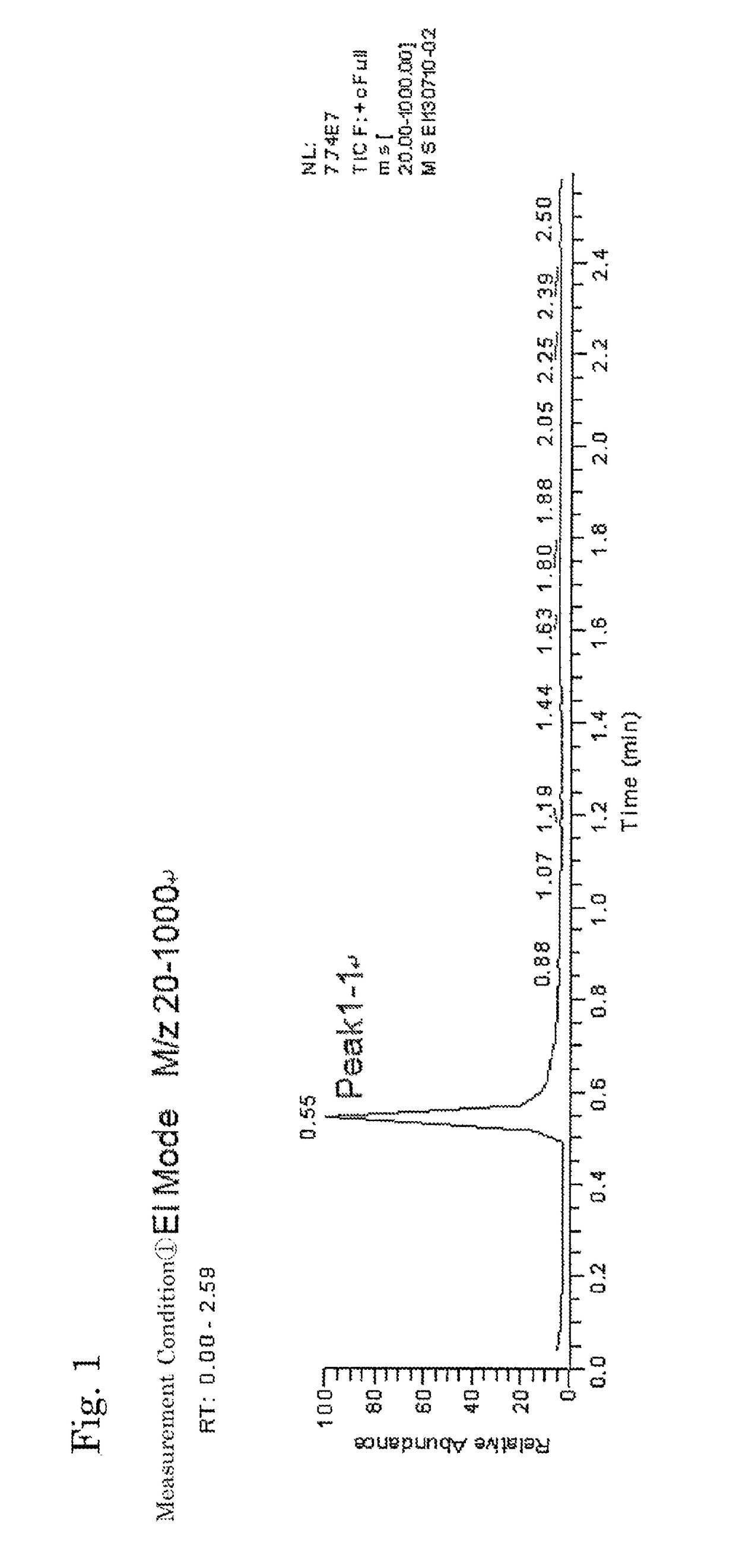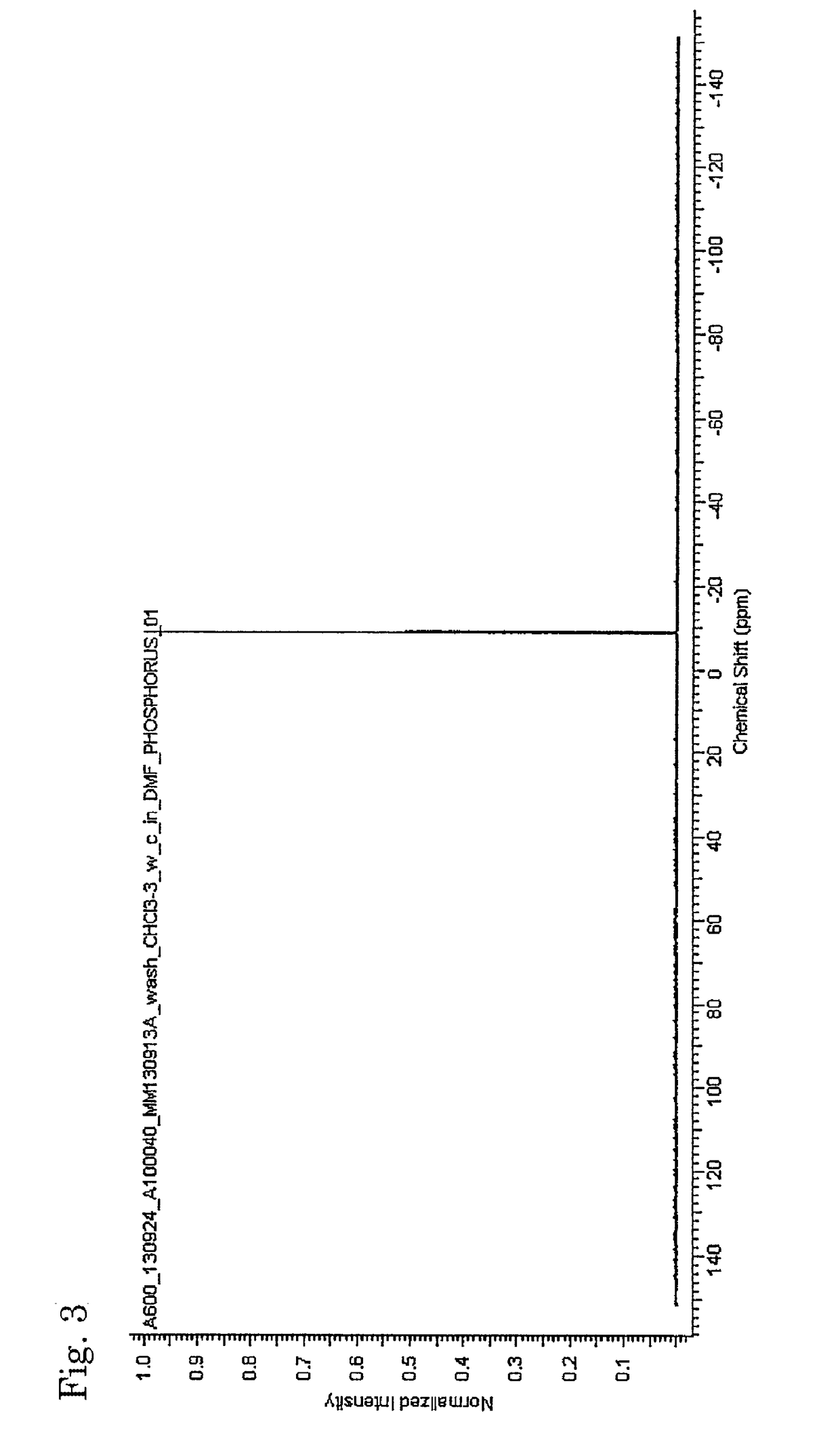Neutral complex of cyclic silane, manufacturing method therefor, and method for manufacturing cyclic hydrogenated silane or cyclic organic silane
a technology of cyclic silane and neutral complex, which is applied in the field of neutral complex of cyclic silane, can solve the problems of increasing raw material cost, increasing the cost of raw materials, and not being able to say that the method described in non-patent document 1 provides a high yield of cyclohexasilane, etc., and achieves excellent solubility, excellent affinity, and high dispersibility.
- Summary
- Abstract
- Description
- Claims
- Application Information
AI Technical Summary
Benefits of technology
Problems solved by technology
Method used
Image
Examples
example 1
[0081]The inside of a 300-mL four-necked flask equipped with a thermometer, a condenser, a dropping funnel and a stirrer was replaced with nitrogen gas, and 5.81 g (0.022 mol) of triphenylphosphine as a coordination compound, 17.2 g (0.133 mol) of diisopropylethylamine (DIPEA) as a tertiary amine and 100 mL of 1,2-dichloroethane as a solvent were then charged therein, to prepare a solution. Subsequently, while the solution in the flask was stirred, 18.0 g (0.133 mol) of trichlorosilane as a halosilane compound was slowly added dropwise from the dropping funnel in the condition of 25° C. After the completion of dropwise addition, the reaction was carried out by continuously stirring the mixture for 2 hours and subsequently heating and stirring the mixture at 60° C. for 8 hours to give a homogeneous reaction solution. The resultant reaction solution was condensed and washed to give a neutral reaction product as a white solid, containing dodecachlorocyclohexasilane to which triphenylph...
example 2
[0094]In a 100-mL two-necked flask equipped with a dropping funnel and a stirrer was charged 2.44 g of the white solid obtained in Example 1 (dodecachlorocyclohexasilane-containing reaction product, 2.18 mmol), and the white solid was dried under reduced pressure. Then, the inside of the flask was replaced with argon gas, and 30 mL of cyclopentyl methyl ether (CPME) was added as a solvent. Subsequently, while the suspension in the flask was stirred, 10 mL of a solution of lithium aluminum hydride (LiAlH4) in diethyl ether (concentration: about 1.0 mol / L) was gradually added dropwise as a reducing agent from the dropping funnel under the condition of −20° C., and then the reaction was carried out by stirring the mixture at −20° C. for 5 hours.
[0095]After the reaction, the reaction liquid was filtered under a nitrogen atmosphere to remove a produced salt. The solvent was distilled off from the obtained filtrate under reduced pressure to give a colorless transparent liquid of crude cyc...
example 3
[0098]A reduction step was carried out using the purified product of the neutral complex of a cyclic silane obtained in Example 1. In a flask was charged 204 mg of LiAlH4 and 10 g of cyclopentyl methyl ether (CPME) under a nitrogen atmosphere, and the mixture was stirred at room temperature for 1 hour to prepare a slurry of LiAlH4. In another 100-mL flask was charged 2.0 g of the purified product obtained in Example 1 and 70 g of CPME under an argon atmosphere, and the mixture was stirred at −60° C. The slurry of LiAlH4 was added dropwise thereto from a dropping funnel over 10 minutes. After the completion of the dropwise addition, the resultant mixture was stirred at −60° C. for 6 hours.
[0099]After the completion of the reaction, the reaction liquid was filtered using a glass filter with a micropore size of 20 to 30 μm under a nitrogen atmosphere, and the solvent was distilled off from the obtained filtrate under reduced pressure to give a colorless transparent liquid of crude cycl...
PUM
| Property | Measurement | Unit |
|---|---|---|
| temperature | aaaaa | aaaaa |
| temperature | aaaaa | aaaaa |
| temperature | aaaaa | aaaaa |
Abstract
Description
Claims
Application Information
 Login to View More
Login to View More - R&D
- Intellectual Property
- Life Sciences
- Materials
- Tech Scout
- Unparalleled Data Quality
- Higher Quality Content
- 60% Fewer Hallucinations
Browse by: Latest US Patents, China's latest patents, Technical Efficacy Thesaurus, Application Domain, Technology Topic, Popular Technical Reports.
© 2025 PatSnap. All rights reserved.Legal|Privacy policy|Modern Slavery Act Transparency Statement|Sitemap|About US| Contact US: help@patsnap.com



